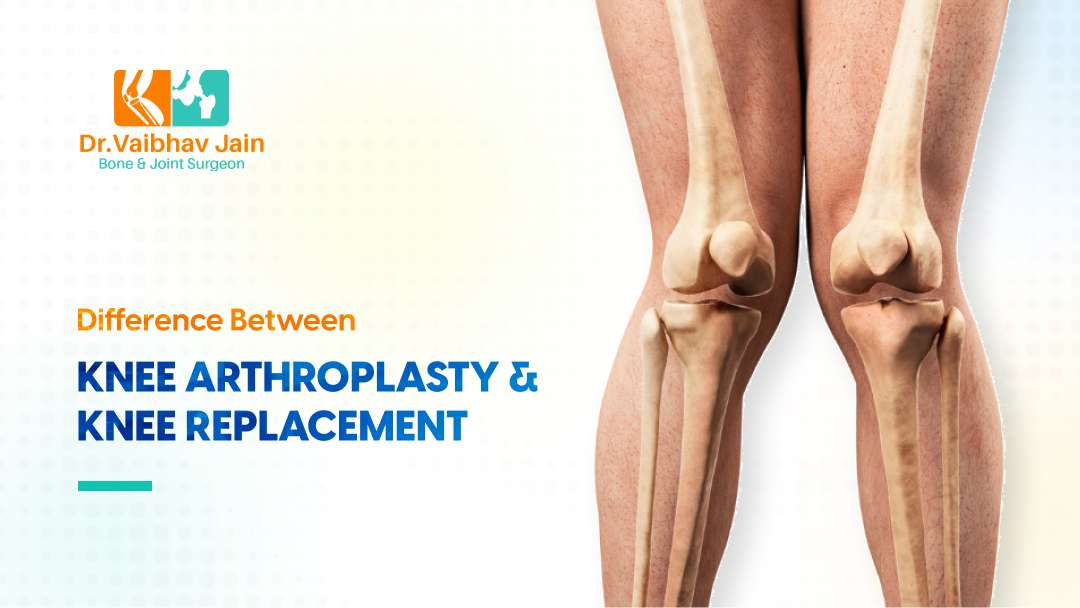Knee Arthroplasty and Knee Replacement procedures are very alike in that they both restore the natural motion of a joint damaged by arthritis or other conditions. However, there are important differences between the two procedures.
Knee arthroplasty Treatment and knee replacement Treatment options for knee arthritis include: Knee replacement surgery, Arthroscopic surgery and Antigen therapy. In this blog post, we’ll take a look at how knee arthroplasty and knee replacement differ and which one might be best for you. Keep reading to learn more!
Knee Arthroplasty Treatment
Knee Arthroplasty Treatment is a surgical procedure that is usually done to repair damaged knees. There are various types of knee surgeries.
The most common ones include Pain-Free Knee Replacement, Osteotomy, Ligament reconstruction, and Knee Arthroplasty. Knee Arthroplasty is the surgery that replaces damaged or diseased knee joints with artificial joints.
Knee Arthroplasty is a surgical procedure. It is done under local or general anesthesia. The next stage of the surgery is the removal of damaged bone and cartilage. The surgeon then inserts a prosthetic joint into the knee.
Knee Replacement
Knee replacement is surgery to repair a damaged or diseased knee joint. The knee joint is a joint that connects the thigh bone to the shin bone.
During knee replacement surgery, the surgeon will remove the damaged articular cartilage and bone in the knee and replace it with a metal implant.
The procedure is typically performed on people who are under the age of 60 who have severe arthritis in their knee joint. Knee replacement surgery can be performed using general anesthesia, regional anesthesia, or spinal anesthesia.
Getting a fast recovery takes appropriate knee arthroplasty Treatment and knee replacement Treatment from an experienced doctor.
Difference Between Knee Arthroplasty And Knee Replacement
| Topic | Knee Arthroplasty | Knee Replacement |
|---|---|---|
| Definition | Another term for knee replacement surgery. | Surgery to replace the damaged parts of the knee with implants. |
| Purpose | To relieve pain and improve knee function. | To relieve pain and improve knee function. |
| Procedure | Involves removing damaged cartilage and bone. | Involves removing damaged cartilage and bone. |
| Types | Partial or total knee arthroplasty. | Partial or total knee replacement. |
| Recovery | Usually requires physical therapy for several weeks. | Usually requires physical therapy for several weeks. |
| Benefits | Reduces pain and improves mobility. | Reduces pain and improves mobility. |
| Suitability | For people with severe knee pain from arthritis or injury. | For people with severe knee pain from arthritis or injury. |
| Implants Used | Metal and plastic components to replace the knee joint. | Metal and plastic components to replace the knee joint. |
Knee Arthroplasty and Knee Replacement are basically the same procedure, both aiming to relieve pain and improve knee function.
Knee arthroplasty and knee replacement are two types of surgery that replace damaged knee joints. While both procedures help with pain and mobility, knee arthroplasty uses a knee prosthesis while knee replacement replaces the entire knee joint with prosthetic implants.
Both procedures are often recommended as a treatment for severe arthritis, rheumatoid arthritis, and other conditions that cause pain, stiffness, and difficulty walking.
Knee arthroplasty uses a knee prosthesis to replace damaged cartilage. The prosthesis is made using plastic, metal, or ceramic, sometimes combined with plastic or metal rods. During surgery, the prosthesis is implanted into the knee joint, which restores movement and function.
The objective of knee arthroplasty is to restore the patient’s normal knee function. This is done by replacing the damaged joint structures with artificial ones. The joints are removed and replaced with components made of metal, plastic, or ceramic.
In knee replacement, an orthopedic surgeon removes the damaged bone and cartilage in the knee, and replaces it with artificial parts. Knee replacement surgery is done to relieve knee pain and to restore knee motion. It is also performed to restore the patient’s ability to walk and stand.
Knee replacement involves replacing the entire knee joint with prosthetic implants. This procedure is most often recommended when conservative treatments such as physical therapy and medication fail to provide pain relief. Knee arthroplasty Treatment and knee replacement Treatment will give you speedy relief but make sure to follow your doctor’s instructions.
Symptoms For Knee Arthroplasty And Knee Replacement
A common question asked by patients is the signs and symptoms of knee arthroplasty and knee
replacement. According to the American Academy of Orthopedic Surgeons, knee replacement surgery and knee surgery are common among elderly individuals.
Le’ts read common Signs and Symptoms:
- Knee pain
- Knee inflammation
- Knee clicking
- Knee stiffness
- Knee swelling
- Knee tenderness
- Knee locking
- Knee popping
- Knee deformity
- Knee instability
Knee Arthroplasty and Knee surgery is a major procedure that can result in significant pain and discomfort. If you are experiencing any of the above symptoms, it may be time to schedule an appointment with your doctor.
Causes Of Knee Arthroplasty And Knee Replacement
The causes that can lead to knee problems include:
- Bursitis – This is a condition that causes pain, stiffness, and swelling of the knee. Most cases of bursitis are caused by repetitive kneeling, squatting, or walking.
- Chondromalacia patella – This is a common knee injury in athletes. The patella – also known as the kneecap – can become painful as a result of overuse, leading to a series of knee problems.
- Fractures – A fracture occurs when a bone is broken. Knee fractures are fairly common, and they occur as a result of an injury.
- Rheumatoid arthritis – This disease causes joint inflammation, which can result in knee problems.
- Osteoarthritis – This disease causes a breakdown of cartilage in the joints. Cartilage is used to protect the ends of bones where they meet to form joints. If the cartilage wears away, the bones can begin to rub against each other, causing pain and swelling.
The knee is often injured and old injuries worsen over time. When it becomes difficult to walk, work, or play, total knee replacement surgery may be the best option.
Knee arthroplasty and knee implant are both very effective procedures for relieving pain and improving mobility. Knee arthroplasty involves resurfacing the damaged areas of the knee joint, while knee replacement involves removing the damaged areas of the knee joint and replacing them with artificial components.
Knee arthroplasty tends to have a longer recovery time than knee replacement, although both types of procedures have fairly similar success rates. Furthermore, consult a Orthopedic Surgeon and follow instructions.





